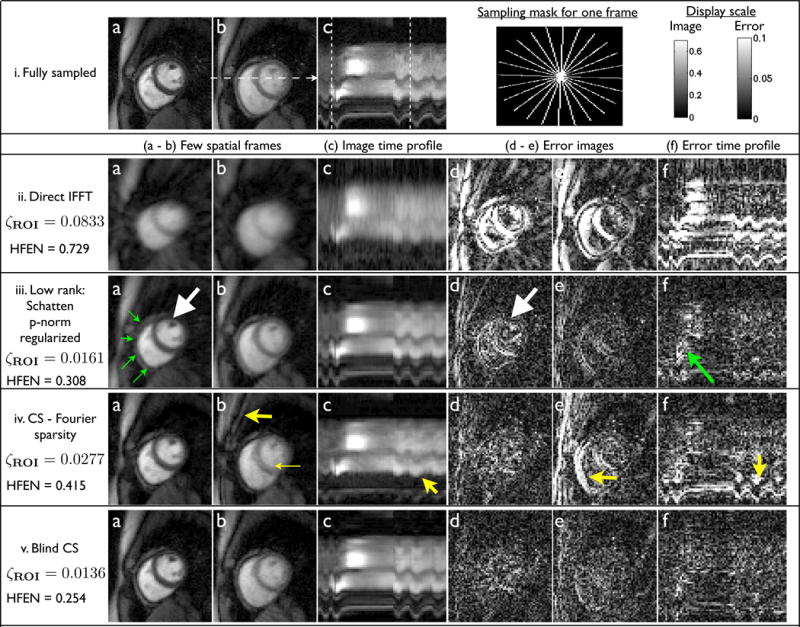Fig. 7.

Comparison of the proposed scheme with different methods on a retrospectively downsampled Cartesian myocardial perfusion data set with motion at 7.5 fold acceleration: A radial trajectory is used for downsampling. The trajectory for one frame is shown in (i). The trajectory is rotated by random shifts in each time frame. Reconstructions using different algorithms, along with the fully sampled data are shown in (i) to (v). (a-b), (c), (d-e), (f) respectively show few spatial frames, image time profile, corresponding error images, error in image time profile. The image time profile in (c) is through the dotted line in (i.b). The ripples in (i.c) correspond to the motion due to inconsistent gating and/or breathing. The location of the spatial frames along time is marked by the dotted lines in (i.c). We observe the BCS scheme to be robust to spatio-temporal blurring, compared to the low rank model; eg: see the white arrows, where the details of the papillary muscles are blurred in the Schatten p-norm reconstruction while maintained well with BCS. This is depicted in the error images as well, where BCS has diffused errors, while the low rank scheme (iii) have structured errors corresponding to the anatomy of the heart. The BCS scheme was also robust to the compromises observed with the CS scheme; the latter was sensitive to breathing motion as depicted by the arrows in iv.
